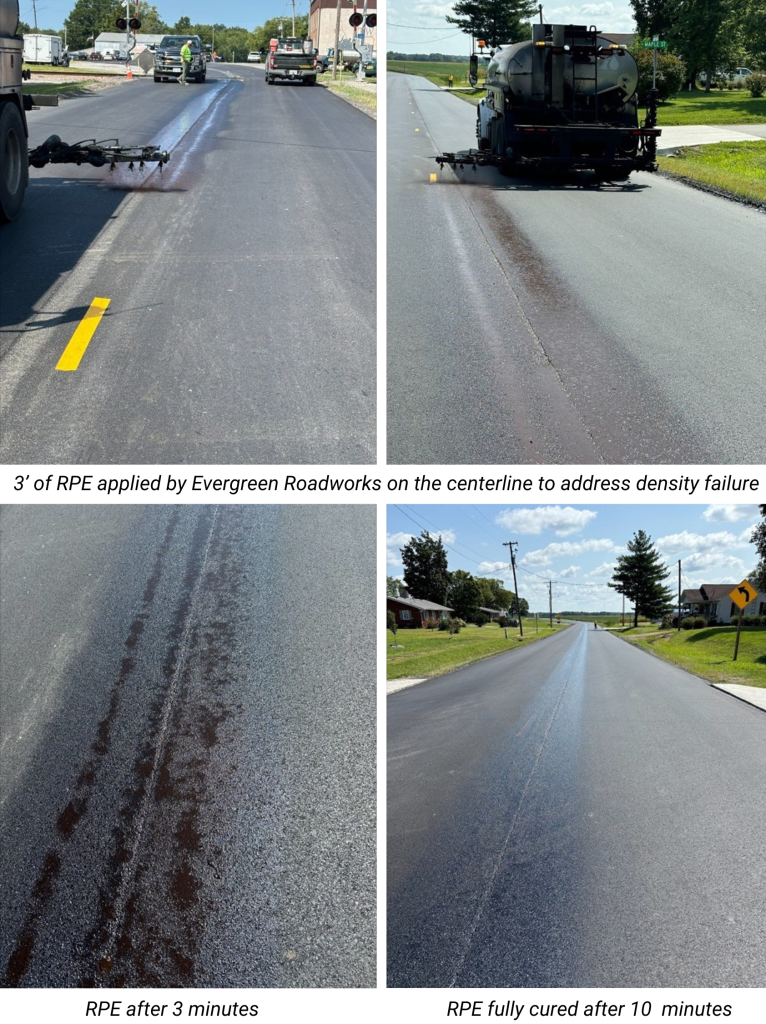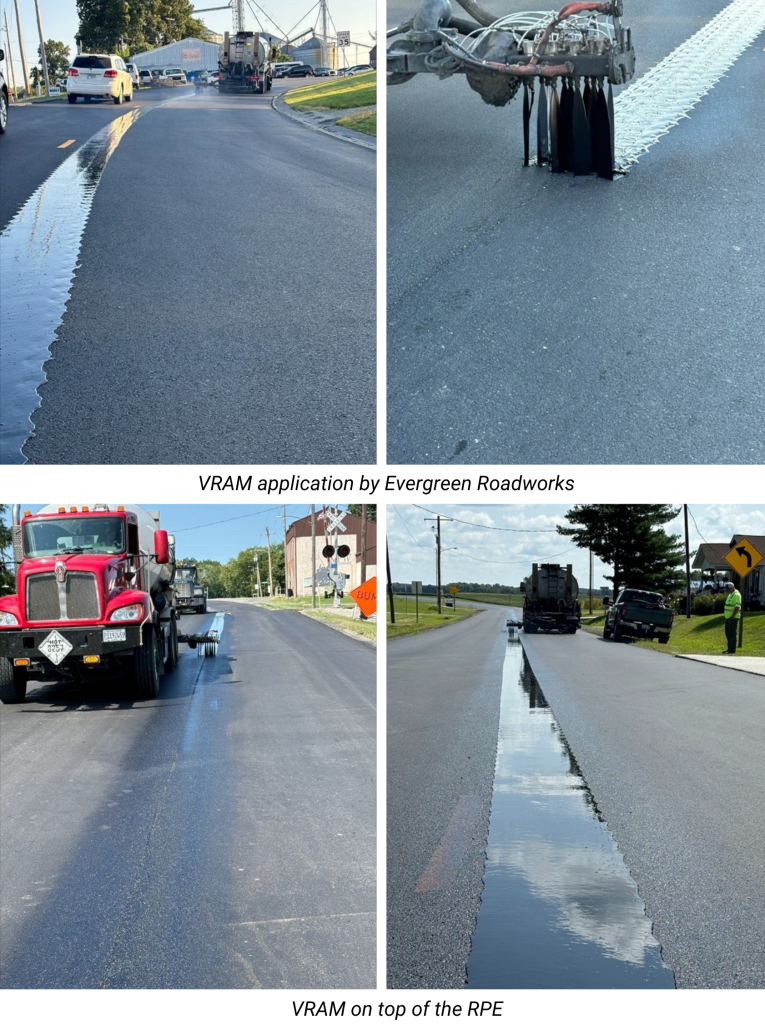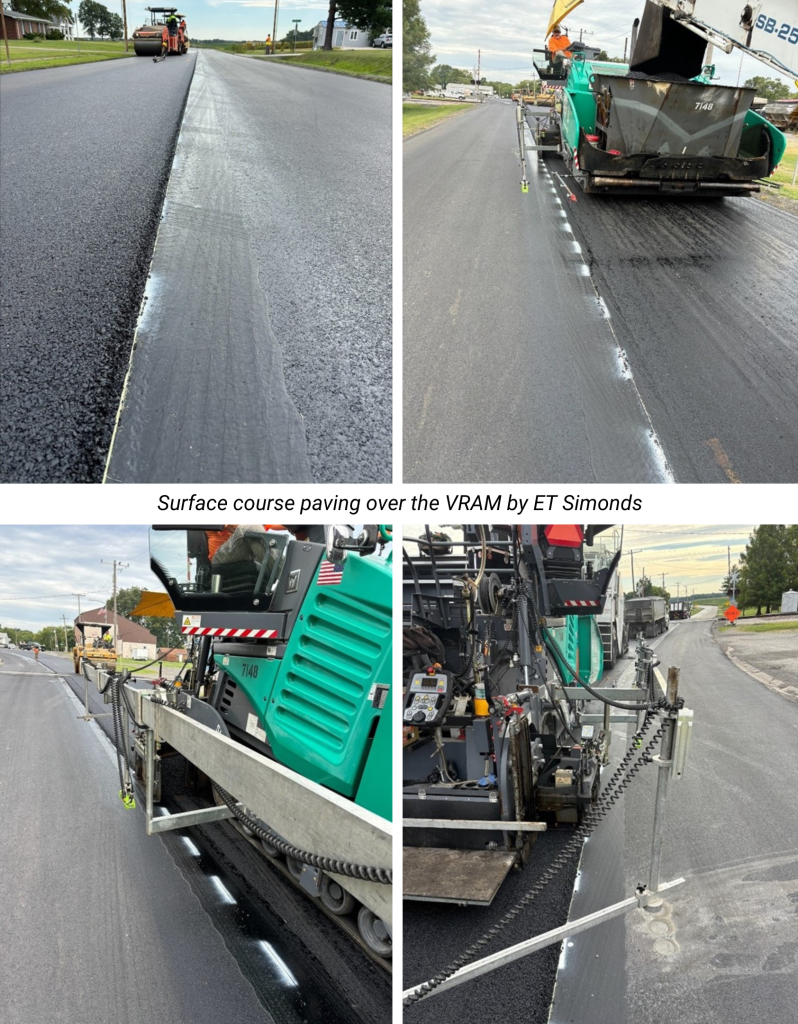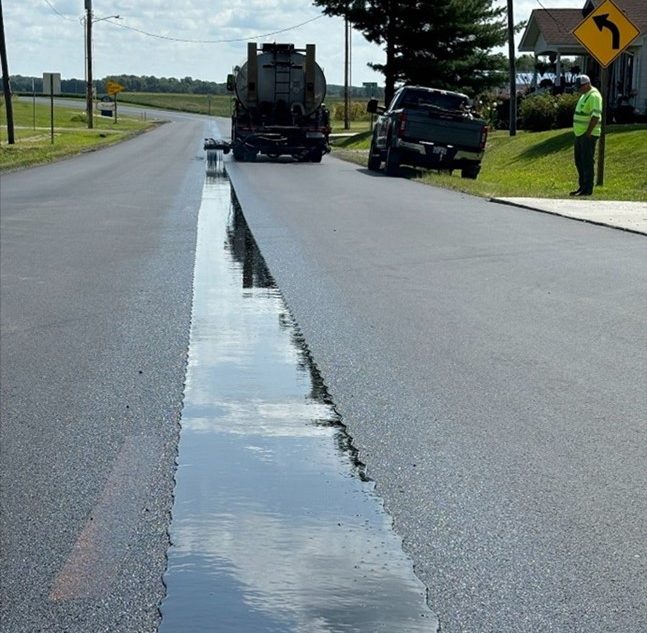Achieving adequate density at the longitudinal joint of a road is challenging. Well-constructed joints typically have 1-2% lower density than the mat, while poorly constructed joints can be 5-10% lower. When the density at the joint is considerably less than that of the mat, the joint area has more air voids and thus has higher permeability, allowing water to more easily penetrate at the joint, speeding up pavement deterioration.
Even a small increase in in-place density can significantly extend the lifespan of asphalt pavements. In essence, optimizing joint construction to enhance density and reduce permeability could be the most effective strategy for boosting long-term pavement performance (Source: TechBrief from the Federal Highway Administration).
Engineers have long sought a reliable remedy to the problem of low longitudinal joint density. There are several reasons for density issues at the joint, including:
- Unconfined Edge During Paving – The first lane’s unconfined edge can lead to material being pushed outward during compaction.
- Thermal Segregation – This construction-related problem is caused by an excessive loss of mix temperature during hauling and paving operations. The result is a significant reduction in the mix’s ability to be adequately compacted.
- Difficulty in Placement & Compaction – Paving multiple lanes requires precise parallel placement. Too little overlap can create gaps, and too much can result in uneven compaction.
- Lack of Adequate Rolling – If the roller does not adequately cover the joint, low-density zones can form.
All these circumstances make it difficult to achieve proper density. Many paving techniques are aimed at achieving a high-density joint, but they often add additional project costs without a consistent guarantee of quality.
However, there is a material-based solution to longitudinal joint failure. Applied just prior to paving, a void reducing asphalt membrane (VRAM) is a unique asphalt emulsion designed to extend the life of longitudinal joints from the bottom up. VRAM is also referred to as longitudinal joint sealant (LJS) in Illinois.
Powerful Solutions for Density Challenges
J-Band® is the premier VRAM/LJS from Asphalt Materials Inc. (AMI). It has been proven to extend the lifespan of the asphalt surface course by an additional 3-5 years beyond the typical 15 years. The State of Illinois has waived requirements to test for density at longitudinal joints with J-Band. The use of J-Band ensures the joint will reach the same density as the rest of the pavement mat.
Another AMI product, AMIGUARD™, a rapid penetrating emulsion (RPE), is specially formulated to penetrate quickly and thoroughly into pavement, filling voids, and extending the life of a road’s surface.
When combined, AMIGUARD and J-Band can provide many more years of protection for pavements and the critically vulnerable longitudinal joints. The following project is an example of this density-duo in action.
IL-148 is Reinforced with J-Band and AMIGUARD
Project Details
- Owner: Illinois Department of Transportation (IDOT)
- Prime Paving Contractor: ET Simonds
- Applicator: Evergreen Roadworks
- Location: IL-148 in Jefferson County, IL
- Date Constructed: August 20, 2024
This project covered just over six miles of IL-148. This section of the state route had experienced issues with binder course failures at the centerline joint and on parts of the shoulder. To combat this issue, IDOT specified a targeted treatment of RPE and VRAM to mitigate future joint challenges.
VRAM and RPE Application
Due to binder course core failures at the joint and shoulder, before hot mix asphalt paving began, the three problem areas of the binder course received a 3-foot-wide application of RPE over the centerline (RPE section lengths: 0.4, 0.5 and 0.45 miles). RPE was also used on sections of the shoulders. The RPE fully cured after 10-13 minutes and was ready for the VRAM treatment. The VRAM was applied in an 18” band at the centerline for the full length of the project.
For context, the day’s ambient temperature was 57° to 73° F. Both materials were applied successfully by crews from Evergreen Roadworks. Personnel present on the project were Cullen, Ben and Francesco (Evergreen Roadworks), Robbie (Paving Foreman, ET Simonds), Linda (IDOT), and Cody (AMI).


Paving Observations
Construction proceeded as normal the next day, a 66° F morning. The 1.5-inch surface course (IL 9.5 Mix D N70) was paved by ET Simonds using a Roadtec SB-2500e shuttle buggy and a Vogele Super2000-3i tracked paver.
Due to the heat of the mix and pressure from the rolling operation, the VRAM migrated upward into the mat, filling air voids and providing a dense, impenetrable structure at the joint. This project’s rolling operation consisted of four steel drum rollers working in a 4-4-1 pattern. They moved from high to low, with one breakdown roller and the other three together. At project completion, there was a visible shadow on the mat where the VRAM had migrated upward.

By using the powerful combination of AMIGUARD RPE and J-Band VRAM, IDOT mitigated troublesome density issues on their reconstruction of Jefferson County’s IL-148.
Repeatedly, J-Band has proven its unparalleled ability to extend the life of longitudinal joints, saving road managers from typical maintenance cost. In fact, agencies can expect to save at least $2 for every $1 invested in J-Band.
Interested in discussing the possibilities for your road network? Our team is happy to talk! Contact us today.
Editor’s Notes:
J-Band® is a registered trademark of Asphalt Materials, Inc. J-Band was created in the labs of the Heritage Research Group (HRG) and is a product of Asphalt Materials, Inc. (AMI).

